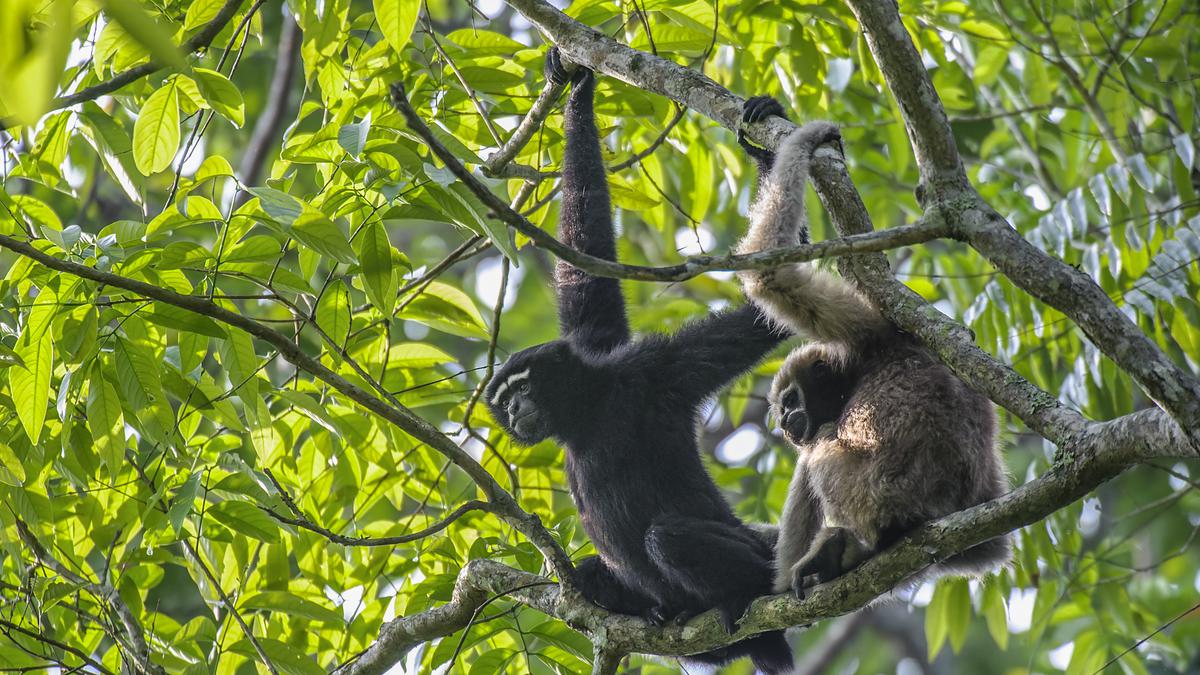
Reroute railway track running through Assam gibbon sanctuary, suggest scientists
The Hindu
Primatologists have suggested rerouting a 1.65-km-long railway track that has divided an eastern Assam Hollongapar Gibbon Sanctuary dedicated to the western hoolock gibbon into two unequal parts. “The sanctuary has become a ‘forest island’, having lost connectivity with surrounding forest patches. Since gibbons are exclusively arboreal animals inhabiting the forest’s upper canopy, they are particularly sensitive to canopy gaps,” says a report. Like the other 19 gibbon species in the world, it is marked endangered due to habitat loss and habitat fragmentation.
GUWAHATI Primatologists have suggested rerouting a 1.65-km-long railway track that has divided an eastern Assam sanctuary dedicated to the western hoolock gibbon (Hoolock hoolock) into two unequal parts.
Their report in Science, a journal, follows that of the Wildlife Institute of India (WII) on designing an artificial canopy bridge to facilitate the movement of the hoolock gibbons across the broad-gauge line within the Hollongapar Gibbon Sanctuary. The track is yet to be electrified.
The authors of the study are Rohit Ravindra Samita Jha and Gopi Govindan Veeraswami of the Dehradun-based WII, Dilip Chetry of Assam-based biodiversity conservation group Aaranyak, and Nandha Kumar of Assam’s Department of Environment and Forests.
Housing about 125 hoolock gibbons, India’s only ape, organised in more than two dozen groups, the sanctuary in the Jorhat district covers 21 sq. km. It also shelters six other primate species – Assamese macaque, Bengal slow loris, capped langur, northern pig-tailed macaque, rhesus macaque, and stump-tailed macaque.
The western hoolock gibbon inhabits the jungles with tall trees on the southern bank of the Brahmaputra (Assam)-Dibang (Arunachal Pradesh) river system. Like the other 19 gibbon species in the world, it is marked endangered due to habitat loss and habitat fragmentation.
“The sanctuary has become a ‘forest island’, having lost connectivity with surrounding forest patches. Since gibbons are exclusively arboreal animals inhabiting the forest’s upper canopy, they are particularly sensitive to canopy gaps,” the WII’s technical report on May 2023 advising an artificial canopy across the railway track in the Hollongapar protected area said.
“Gibbon families on both sides of the railway track have thus been effectively isolated from each other, thereby compromising their population’s genetic variability and further endangering their already threatened survival in the sanctuary,” the report said.













